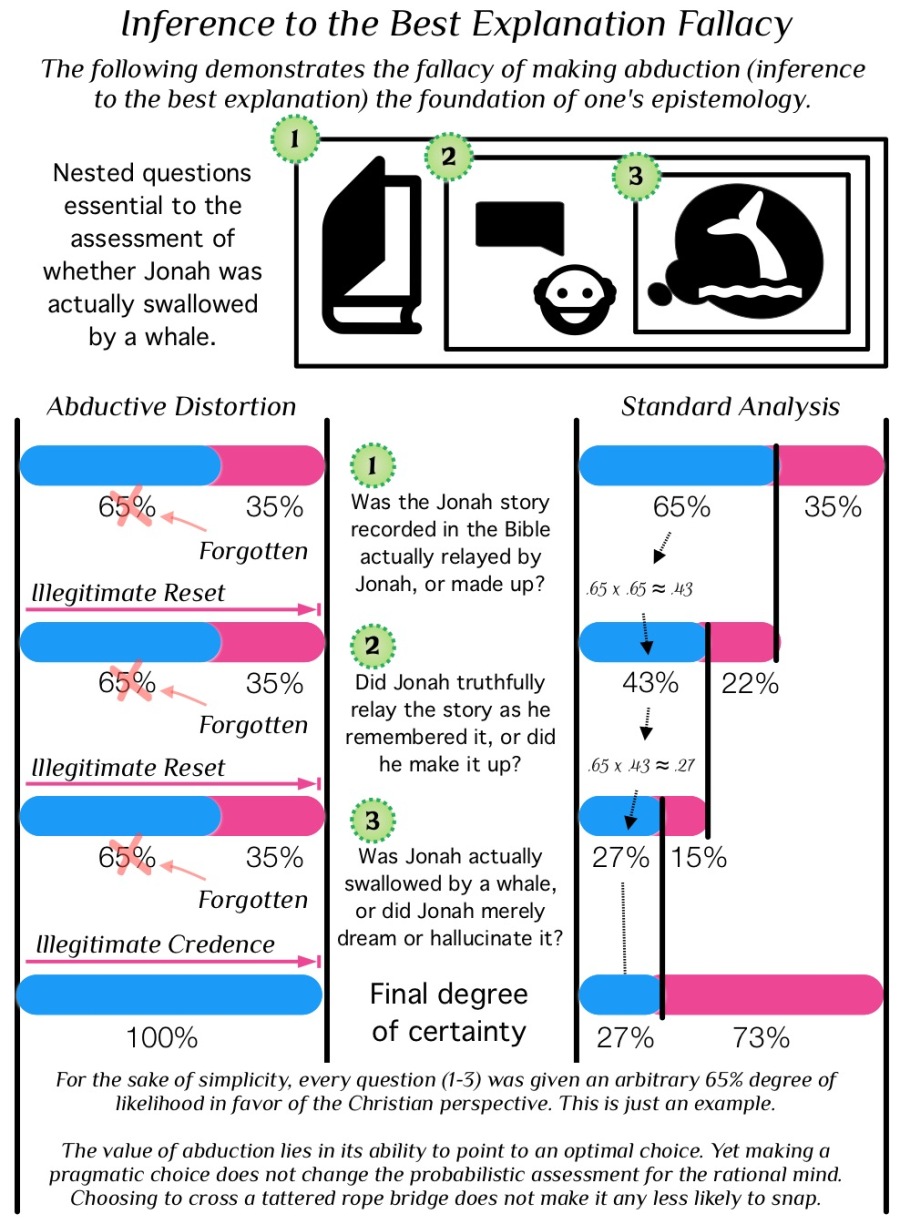 While induction serves as the justification for degrees of belief, abduction serves a lesser, more specific role to identify the optimal choice when a decision must be made. However, identifying the best explanation can not legitimately change the inductive probabilistic assessment of the proper degree of belief. Nor does making a decision based on identifying the best explanation legitimize a higher degree of belief other than what has been inductively determined.
While induction serves as the justification for degrees of belief, abduction serves a lesser, more specific role to identify the optimal choice when a decision must be made. However, identifying the best explanation can not legitimately change the inductive probabilistic assessment of the proper degree of belief. Nor does making a decision based on identifying the best explanation legitimize a higher degree of belief other than what has been inductively determined.
What then is the proper function of abduction? It is limited to making pragmatic choices. It does not permit us to, subsequent to the choice, change our inductive assessment of the proper degree of epistemic certainty made prior to the pragmatic choice.
For example, when being chased by a tiger, we may decide that there is only a 20% likelihood the tattered rope bridge across the deep canyon in front of us will hold our weight. But the smaller 1% likelihood we can beat the tiger in hand-to-paw combat compels us to abductively choose to cross the bridge as our best chance of survival. Once we make that choice, we should not then increase our certainty that the bridge will hold our weight. We instead rationally maintain that 20% degree of initial certainty until the bridge has been crossed.
Inference to the best explanation can not serve as a legitimate foundation of epistemology. Induction serves that role.
(See also #21, “Supplementary G” and “Supplementary K”.)



